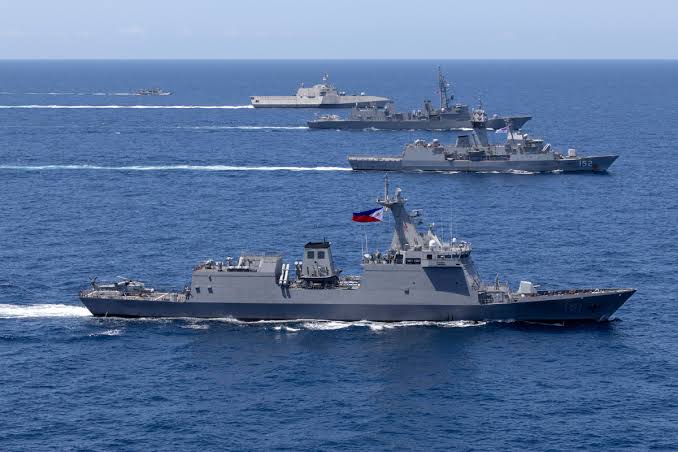In a significant move, the Philippines and Vietnam are conducting their first-ever joint maritime exercises. These drills, set to take place on August 9, aim to strengthen the cooperation between the two nations amid rising tensions in the South China Sea.
Joint Exercises to Strengthen Cooperation
The exercises are a direct response to China’s aggressive actions in the region, where both the Philippines and Vietnam have territorial claims.
The collaboration involves the coast guards of both countries. Vietnam’s 90-meter ship, CSB 8002, arrived in Manila on Monday, marking the beginning of five days of training with the Philippines’ 83-meter offshore patrol vessel, BRP Gabriela Silang. The joint drills will include search and rescue simulations and training in fire and explosion prevention.
Strategic Boost to Indo-Filipino Defense Relationship Amid Heightened Tensions in South China Sea
This initiative is part of a broader strategy to counter China’s assertive behavior. China’s new regulation allowing its coast guard to detain foreign nationals crossing maritime lines set by Beijing has added urgency to these exercises. This regulation has intensified maritime disputes in the region, making these joint drills even more critical for the Philippines and Vietnam.
Background and Strategic Importance
The timing of these exercises is significant. They follow an agreement between Manila and Beijing to reduce tensions in the South China Sea, specifically concerning the Philippine resupply missions to Second Thomas Shoal. This collaboration also coincides with a change in Vietnam’s leadership after the death of Communist Party General Secretary Nguyen Phu Trong and the succession of Vietnamese President To Lam as party leader.
Strategic Maneuvers: Vietnam’s Risky Alignment with Russia Amid U.N. Sanctions
Experts highlight the importance of these drills for enhancing bilateral relations and regional security. They see it as a template for how countries with disputes can still work together. The Philippine Coast Guard emphasizes that the Vietnamese Coast Guard’s visit is part of a capacity-building initiative agreed upon during the Philippine President’s state visit to Hanoi in January.
The joint exercises are also seen as a strategic move. Should the need arise for the Philippines and Vietnam to join forces in future incidents, these drills will be crucial. They are set to take place in Manila Bay, facing the South China Sea, a region that has seen heightened maritime disputes due to China’s new regulation.
Squad Shield: US Prefers Philippines over India Amid Rising South China Sea Tensions
Regional Implications
The joint exercises between the Philippines and Vietnam are viewed as essential steps towards regional cooperation. The drills demonstrate that despite being rival claimants in the South China Sea, the two countries can engage in meaningful cooperation and training. This sends a strong message to the international community about the potential for collaboration in the face of common challenges.
The exercises also highlight the importance of building partnerships and enhancing mutual trust and communication between the two nations. This cooperation is crucial for a unified position among Southeast Asian countries, which is essential for pushing back against Beijing’s expansionism.
There are suggestions that this cooperation could be expanded to include other ASEAN claimant states in the South China Sea. This would further strengthen the regional pushback against China’s aggressive actions. The joint exercises are seen as important developments for bilateral relations and regional security, making it harder for China to interfere.
US-China War: Looming Threat Over Philippines’ Strategic Role in Spratly Islands
In conclusion, the joint exercises between the Philippines and Vietnam mark a significant step in maritime cooperation amid rising tensions in the South China Sea. The drills are a strategic move to counter China’s assertive actions and demonstrate the potential for collaboration among Southeast Asian countries. By working together, the Philippines and Vietnam are setting an example of how nations with disputes can still cooperate for regional security and mutual benefit.


